Sphinx canadensis
Sphinx canadensis
SfinksMkah-nuh-DENS-ihs
Boisduval, [1875]
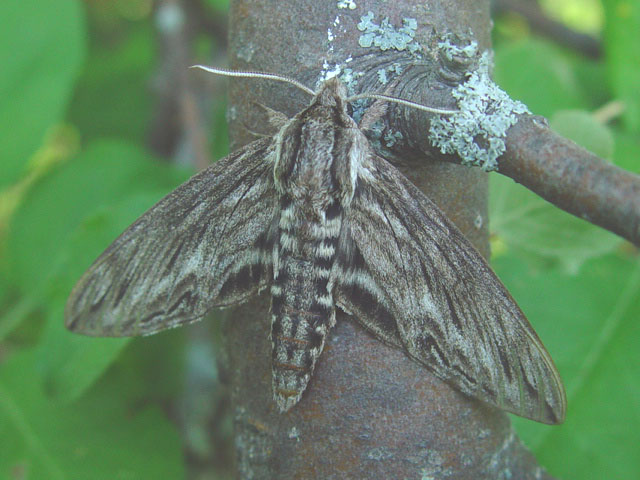
Sphinx canadensis, Peterborough, Ontario, June 13, 2005, courtesy of Tim Dyson.
This site has been created by Bill Oehlke.
Comments, suggestions and/or additional information, especially sightings, are welcomed by Bill.
TAXONOMY:
Family: Sphingidae, Latreille, 1802
Subfamily: Sphinginae, Latreille, 1802
Tribe: Sphingini, Latreille, 1802
Genus: Sphinx Linnaeus, 1758 ...........
Species: canadensis Boisduval, [1875]
|
DISTRIBUTION:
The Canadian Sphinx Moth, Sphinx canadensis
(Wing span: 2 3/4 - 3 3/8 inches (7 - 8.5 cm)),
flies from Newfoundland west to western Ontario and into Manitoba; south to New York,
Kentucky, and Arkansas. Quebec is the specimen type locality.
Dr. Richard Westwood, Associate Professor Center for Forest Interdisciplinary Research and Depts. of Biology and Environmental Studies,
University of Winnipeg, reports they are moderately common near Winnipeg, Manitoba.
Visit Sphinx canadensis,
Bailey's Harbor, Door County, Wisconsins, July 16, 2001, courtesy of Janice Stiefel.
I have never seen one on Prince Edward Island. Sphinx canadensis
Peterborough, Ontario, June 13, 2005, courtesy of Tim Dyson. | 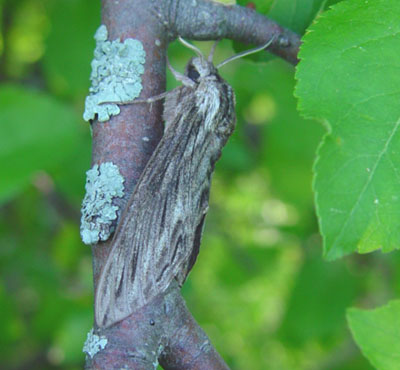 |
The absence of the white spot on each forewing and the more brownish coloration serve to separate canadensis from S. poecilus.
The hindwing fringe also tends to be white on poecilus and checkered brownish on canadensis.
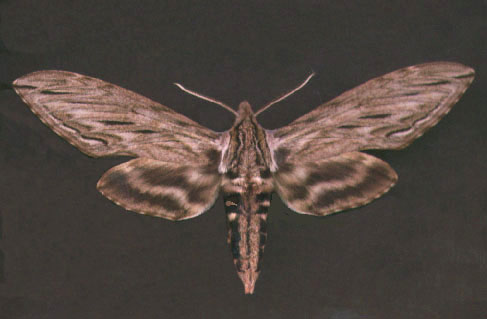
Sphinx canadensis scan by Bill Oehlke.
The scan above is from a specimen sent to me by Reginald P. Webster of New Brunswick.
The upperside of the forewing is gray-brown or yellow-gray with black streaks along and between the veins and an interrupted white line
along the outer margin. The upperside of the hindwing is black with white bands.
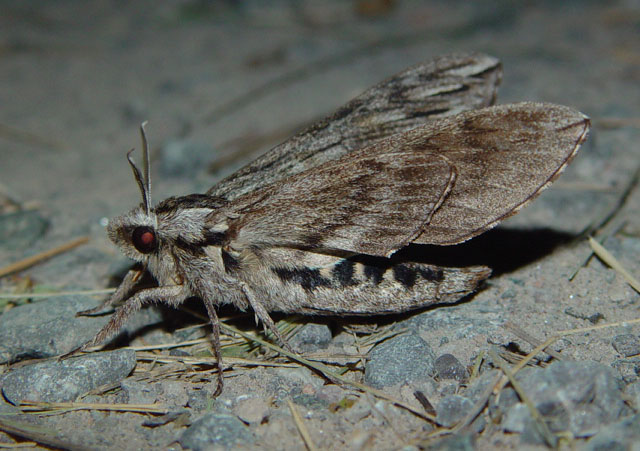
Sphinx canadensis, Peterborough, Ontario, June 30, 2005, courtesy of Tim Dyson.
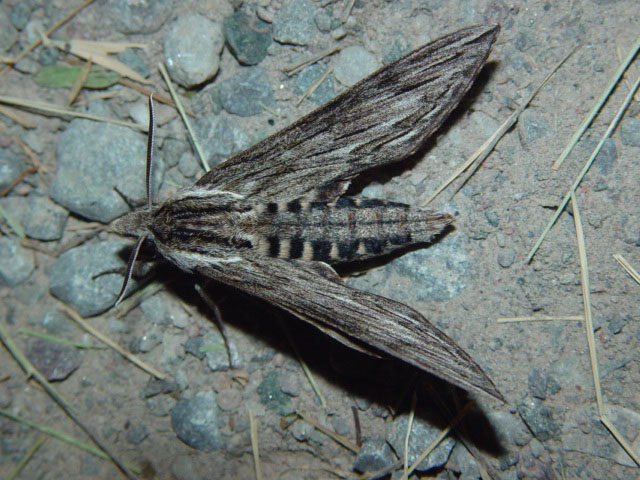
Sphinx canadensis, Peterborough, Ontario, June 30, 2005, courtesy of Tim Dyson.
In July of 2010 Dave Small sent me images which he had tentatively identified as Sphinx canadensis
from Athol, Worcester County, Massachusetts. I spent some time looking at the images and wrote back to Dave that I felt the moth
in question was more likley Sphinx chersis. I have assembled a
Sphinx canadensis vs Sphinx chersis comparison page, based on
what I think?? are fairly consistent diagnostic feature to help distinguish the two species. It is possible that
the characters I have indicated are not consistent across a large number of specimens.
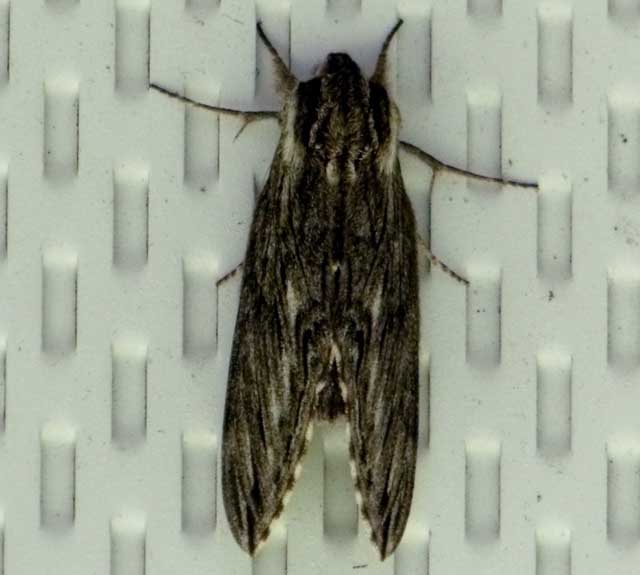
Sphinx canadensis, Medford, Taylor County, Wisconsin,
June 4, 2011, courtesy of Joan F. Rickert.
Joan F. Rickert writes regarding the image directly above, "This picture was taken on June 4, 2011. It was high up on the house eave so I couldn’t get a picture of
the hind wings. I think it is either an Ash Sphinx or Canadian Sphinx. There was a Waved Sphinx nearby and it seemed about the same size."
I feel it is Sphinx canadensis, based on the characters mentioned in the canadensis vs chersis comparison page, and the size comparison mentioned by Joan
supports that determination.
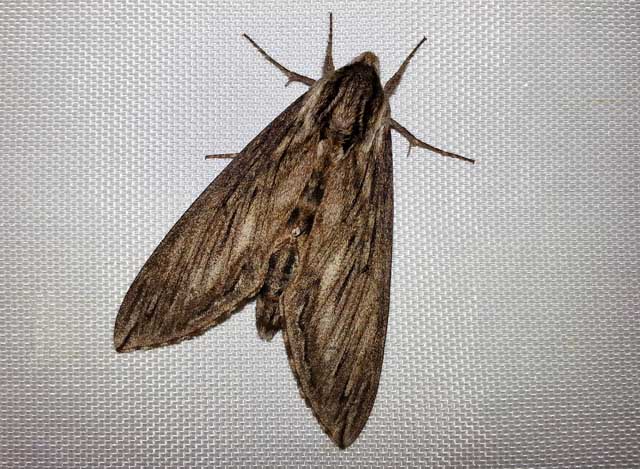
Sphinx canadensis, Rimouski, Quebec,
courtesy of Jim Fortin.
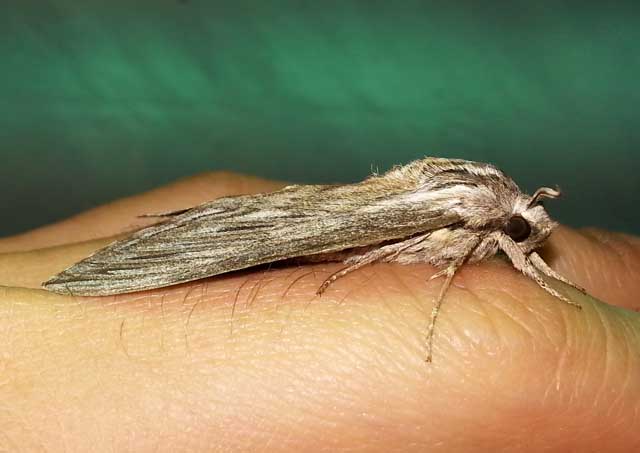
Sphinx canadensis, Rimouski, Quebec,
courtesy of Jim Fortin.
FLIGHT TIMES:
Sphinx canadensis adults fly as a single brood from May-September in the
northeast. There are two broods from May-June and August-September in Arkansas. Joan F. Rickert reports an early June flight
in Medford, Taylor County, Wisconsin. Derek Bridgehouse reports a June 25 flight (unusually early; JF) in Quebec.
Jim Fortin reports, "The flight period for eastern Quebec (Rimouski) starts near June 20 and continues until July 20 for sure, maybe later, but the
latest I have hunted was in the third week of July. In eastern Quebec, I see most specimens in the first half of July."
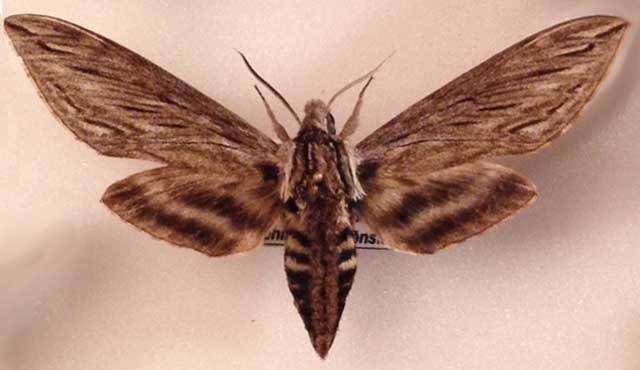
Sphinx canadensis, Rimouski, Quebec,
June 25, 2014, courtesy of Derek Bridgehouse.
ECLOSION:
Pupae probably wiggle to surface from subterranean chambers just prior to eclosion.
SCENTING AND MATING:
Females call in the males with a pheromone released from a gland at the tip of the
abdomen. Adults probably nectar at a variety of flowers.
EGGS, LARVAE, PUPAE:
Early reported (probably in error) larval hosts are white ash
(Fraxinus americana) and blueberry (Vaccinium). Based on observations by James P. Tuttle, it may be that this species
feeds exclusively on black ash (Fraxinus nigra).
Jim Fortin reports, "I confirm from my observations that the species only accepts black ash (Fraxinus nigra)." Jim adds, "I tried them last summer (2015) on
white ash ... all died and NEVER took a bite. And this year with black ash there was a superb survival rate!"
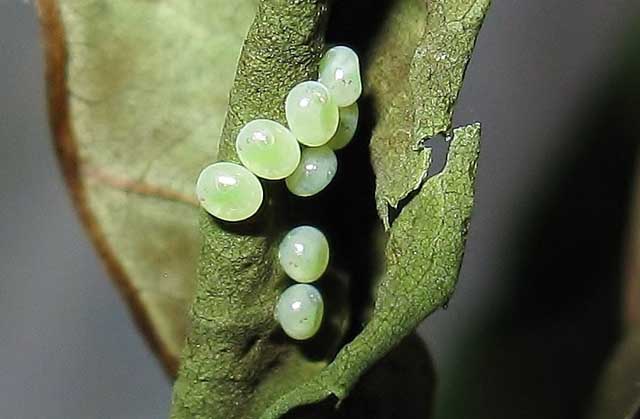
Sphinx canadensis eggs, Rimouski, Quebec,
courtesy of Jim Fortin.
Pale green, slightly oval, spherical eggs are deposited in small clusters on host plant foliage.
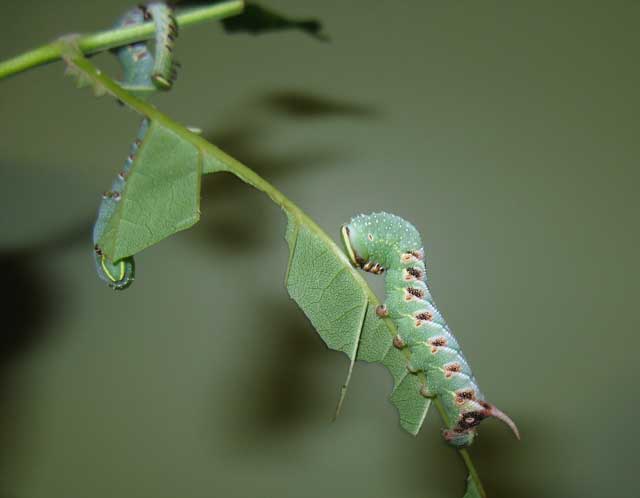
Sphinx canadensis early instars, Rimouski, Quebec,
courtesy of Jim Fortin.
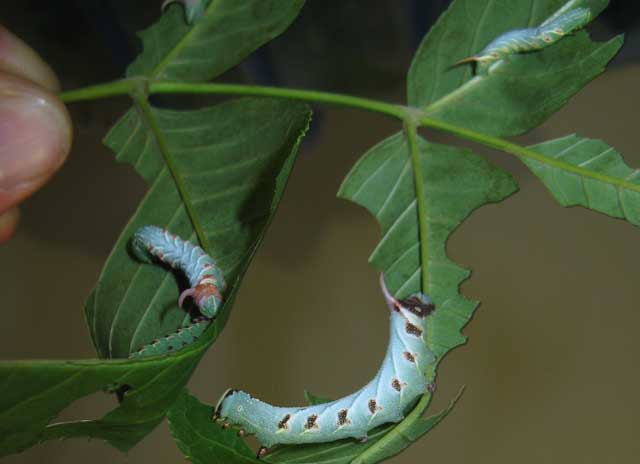
Sphinx canadensis third to fifth? instars, Rimouski, Quebec,
courtesy of Jim Fortin.
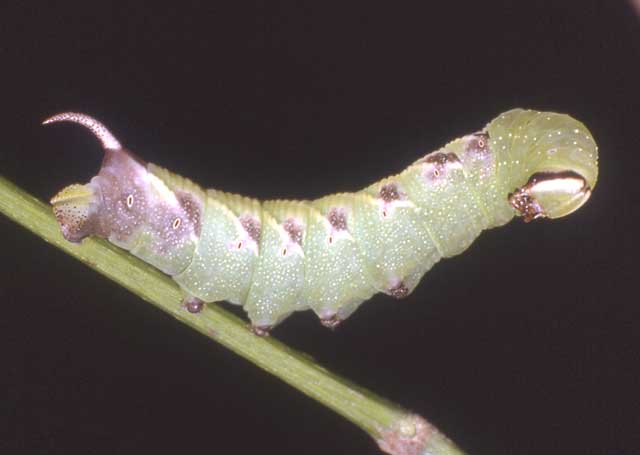
Sphinx canadensis fifth instar on black ash, Three Rivers SGA, St. Joseph County, Michigan,
courtesy of James P. Tuttle.
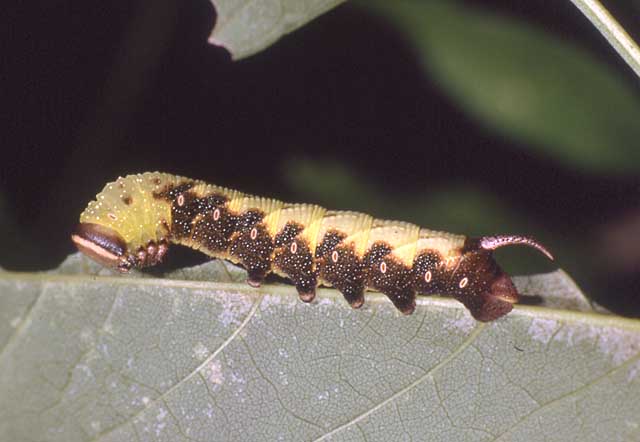
Sphinx canadensis fifth instar on black ash, Three Rivers SGA, St. Joseph County, Michigan,
September 1994, courtesy of James P. Tuttle.
Larvae can be quite variable.
Many thanks to Alexandre Laberge who provides the following series of images from Quebec. Alexandre is feeding them on Black ash (Fraxinus nigra) and
reports they have moved from hatchlings to fourth instar larvae in as few as eight days. Incubation took only four days. Those larvae, which were offered white or
red ash, did not survive.
To obtain eggs, Alexandre placed the captured female in a normal net cage with some Fraxinus branches in water.
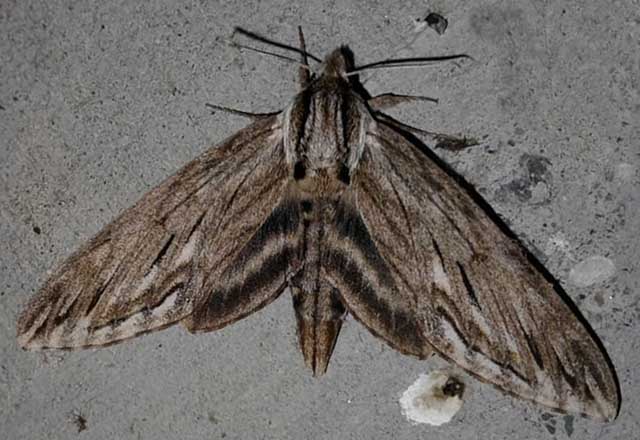
Sphinx canadensis female, Quebec, August 5, 2018, courtesy of Alexandre Laberge.
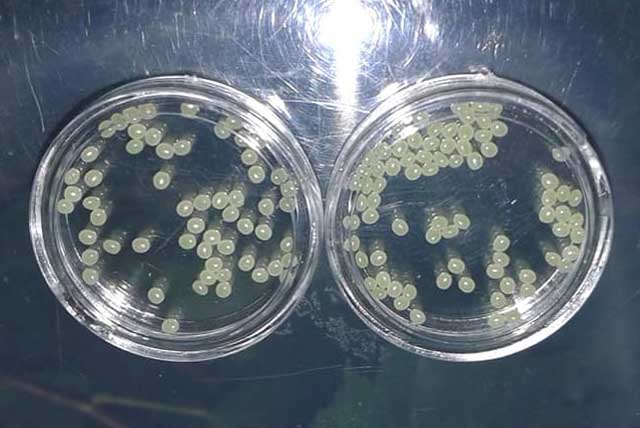
Sphinx canadensis eggs, Quebec, August 5, 2018, courtesy of Alexandre Laberge.
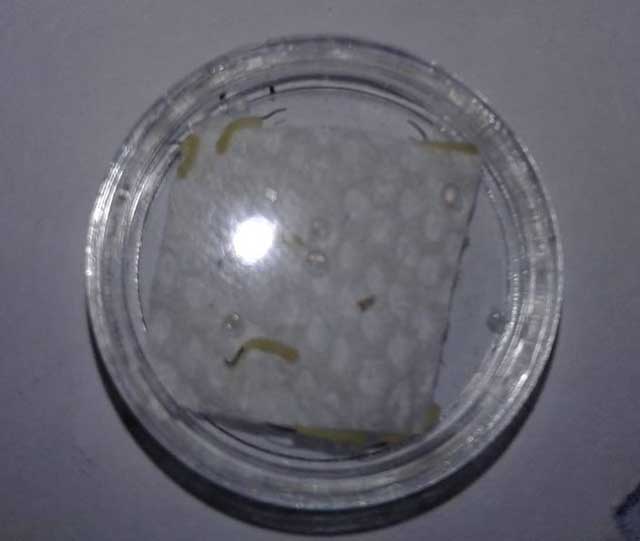
Sphinx canadensis hatchlings, four day incubation period,
Quebec, August 8, 2018, courtesy of Alexandre Laberge.
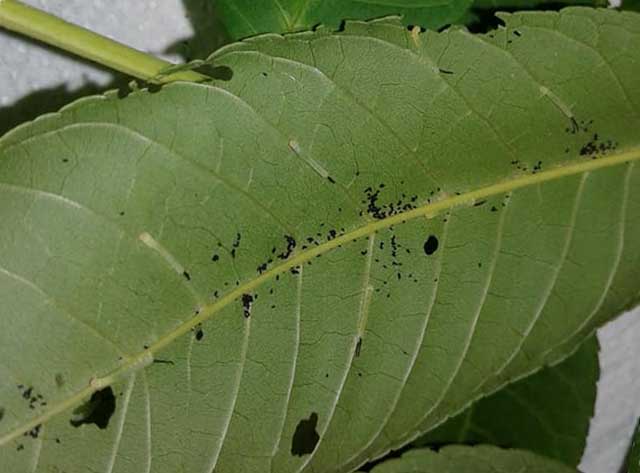
Seven, well camouflaged, Sphinx canadensis hatchlings, on black ash,
Quebec, August 9, 2018, courtesy of Alexandre Laberge.
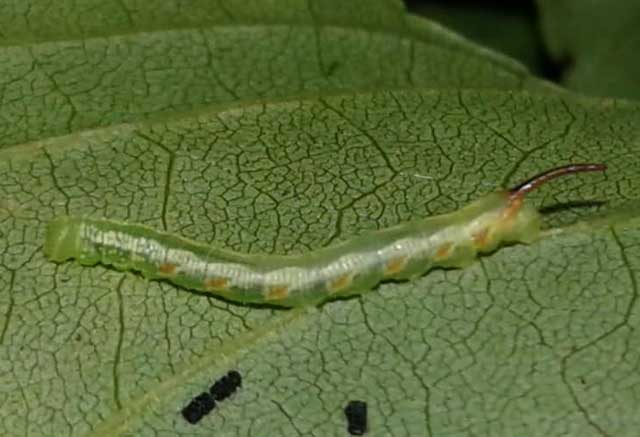
Sphinx canadensis second instar, on black ash,
Quebec, August 13, 2018, courtesy of Alexandre Laberge.
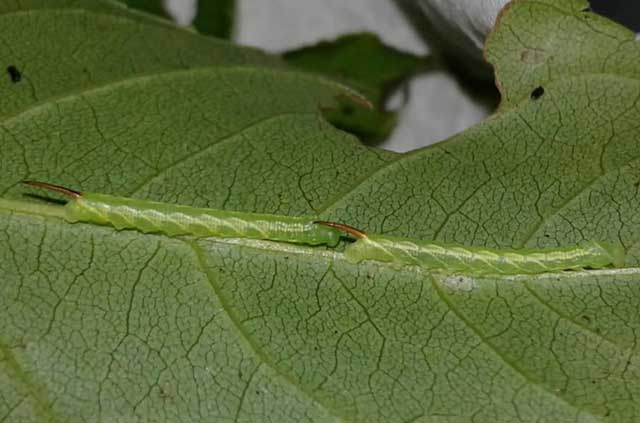
Sphinx canadensis second instars, on black ash,
Quebec, August 13, 2018, courtesy of Alexandre Laberge.
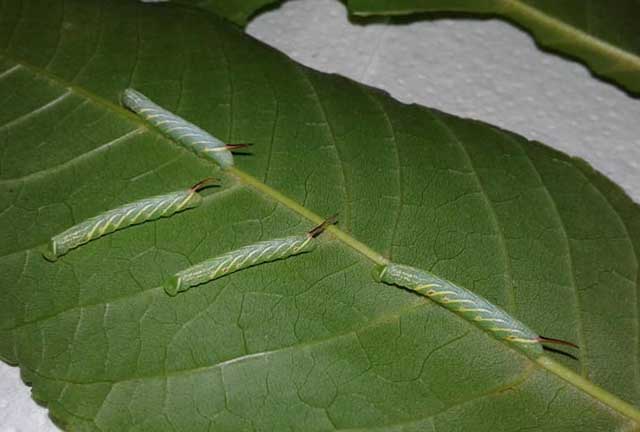
Sphinx canadensis second instars, on black ash,
Quebec, August 17, 2018, courtesy of Alexandre Laberge.
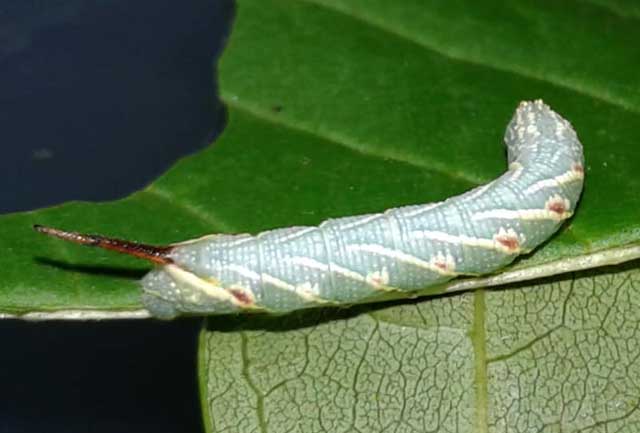
Sphinx canadensis third or fourth instar, on black ash,
Quebec, August 17, 2018, courtesy of Alexandre Laberge.
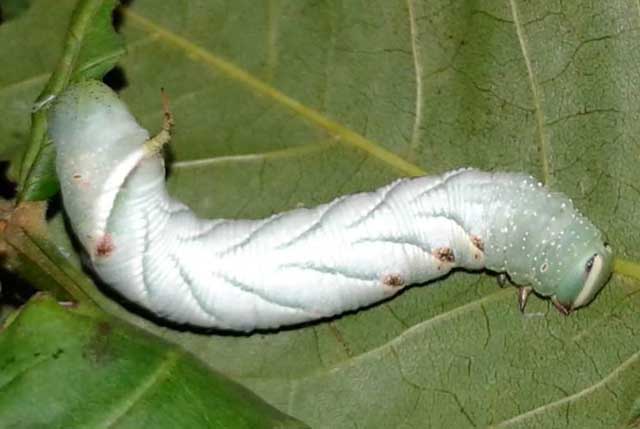
Sphinx canadensis fourth or fifth instar, on black ash,
Quebec, August 22, 2018, courtesy of Alexandre Laberge.
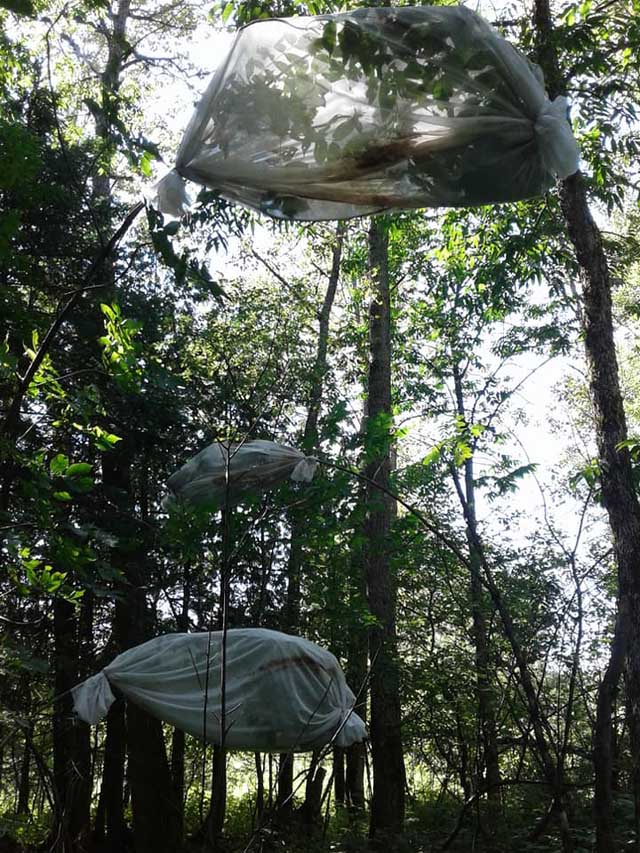
Sphinx canadensis sleeves on black ash,
Quebec, courtesy of Alexandre Laberge.
Alexandre sleeves his larvae as the host plant leaves do not retain or transport water very well when separated from the tree.
Return to U.S.A. Table
Return to Sphingidae Index
Return to Sphingini Tribe























